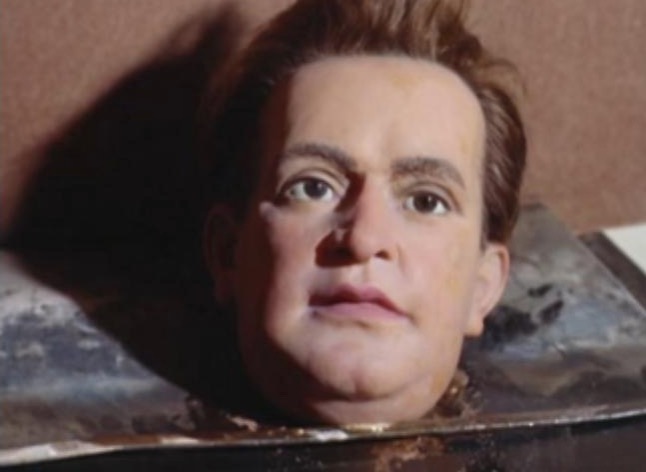Replicants. Obviously.
Welcome to The Future of … series.
Primary care is experiencing a critical workforce shortage. Only 15% of graduates are thinking about a career in general practice while over 85% of older GPs are thinking about dying.
In today’s episode we’ll be looking at the extraordinary work of Professor Candid who has has spent years tirelessly developing artificial GPs.
The first replicants the Professor made were not very convincing and had very limited skills.
They often scared patients and were quite clumsy. Mainly because they didn’t have proper hands or elbows, yet they still looked like they could punch a massive hole through a brick wall.
This is the Nigel-374.

Nigel-374 was the Professor’s first working prototype. Here he is giving the “V” sign, a quintessentially offensive gesture. The difference between this and a real GP is that the real GP wants to make this gesture, but doesn’t.
Nigel-374 worked at the Melbourne Medical Centre alongside Professor Candid for nearly six months before he punched a massive hole through the wall, electrocuted several humans and tried to commandeer a light aircraft.
Professor Candid gave up on his research after that, but with his wife’s encouragement (mainly because she couldn’t stand him kicking around the house) he returned to the workshop and created hundreds of additional prototypes, each one slightly better than the last.

Today’s models are virtually indistinguishable from actual human beings.
This is a picture of the boy band One Direction. Can you tell who is a human and who is a replicant?

Experts agree it’s impossible to tell.
Today’s replicants are all installed with the latest clinical data, protocols and medical guidelines and have normal sized hands and elbows.
Once the replicant has been built it is fully functional and ready to start work. The best thing about them is that they will never complain.
They don’t complain if they have to work in an area of workforce shortage or complete 50 hours of CPD unpaid, they don’t complain if they can only get to bill a 23 and have to spend three hours commuting to work. They don’t even complain when they’re vilified in the press or when patients call them arseholes to their faces. In fact they don’t really feel anything at all, their circuity simply does not permit it.
As soon as the replicants start to feel anything approaching a human emotion they are considered defective and are sent straight back to the workshop to be destroyed.
This replicant was destroyed because she developed a liking for country walks and almond liqueur.

This replicant was destroyed because he tried to have sex with his toaster.

But the latest models, known as Nigel-328212192012 and Nigella-328212192013, have been carefully reprogrammed to lack any kind of empathy, widely regarded as the GP’s greatest weakness. They will soon replace every human GP in Australia.

Next time on “The future of” … If bees make honey, why don’t wasps make mustard?


